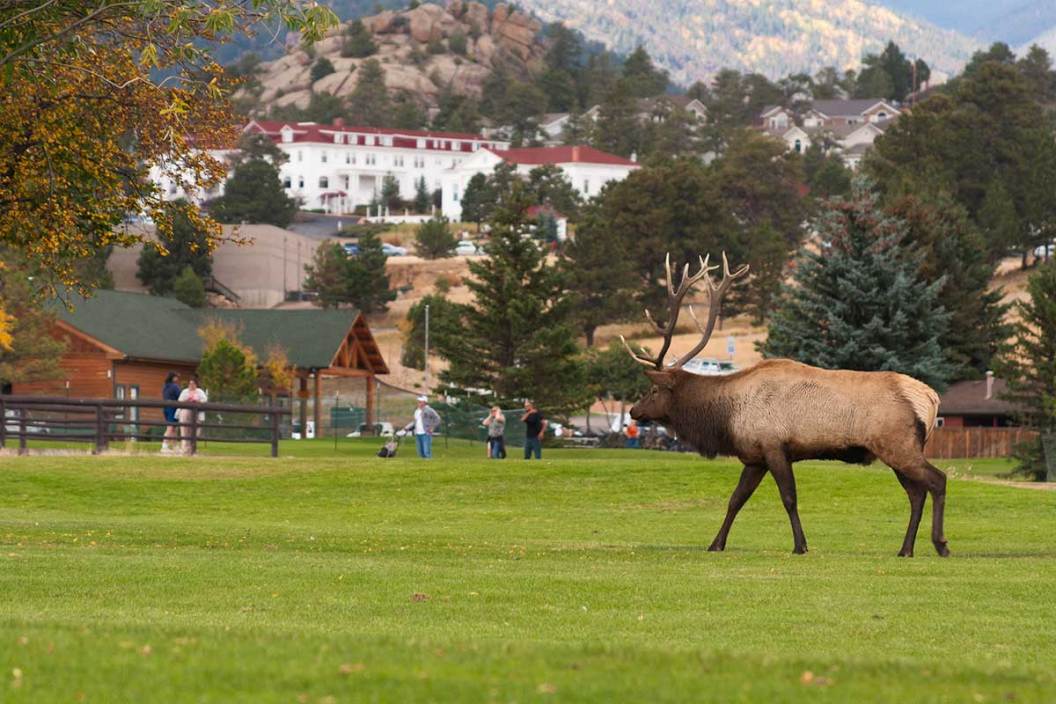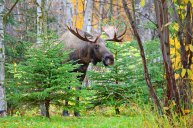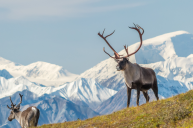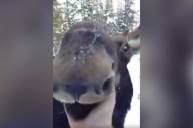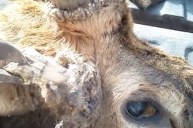It would be awesome to encounter a moose in the wild, but it could be very dangerous. Here's what to do.
It's not often, but sometimes the animals we encounter can be dangerous and aggressive. We've all seen instances and assumed we'd never be in such a predicament. But the fact is, moose, elk, and even mule deer and whitetails, can grow to immense sizes, and you need to practice extreme caution when encountering them in the wild.
Moose and elk are two of North America's largest creatures, and in the wrong circumstances, they can be very dangerous. Unlike a black bear or grizzly bear, these hoofed animals won't try to hunt you down and eat you, but can still stomp you or gore you with their antlers until you stop moving.
Sure, this all sounds quite gruesome, but wild animals are just that, wild. They definitely need some distance between you and them in certain situations. That being said, chance encounters are a thing that can happen when we least expect it, so for anyone who regularly travels in elk or moose country, being ready for such a happenstance could save your life.
Here's what to do if you happen upon a few different animals.
Cow Moose
It has become increasingly well known that an attack from a moose, especially a cow moose, is more common than you'd think in North America. It is possible for an adult bull moose to be over six-feet tall at the shoulder and weigh close to 1,000 pounds and cows aren't much smaller.
The fact is, unlike deer or even elk, moose are also less likely to steer clear of humans they encounter, making them even more dangerous. Don't expect to scare away a moose the same way you might startle a deer on the trail.
With calves in the spring and early summer, breeding in the fall, and survival in the winter, staying aware in moose country is a year round concern.
The best preparation for a close encounter with a cow moose is to know the factors that can trigger an attack and avoid them. You may cause a change in their behavior without realizing it, especially if you have a dog with you. By the way, moose do not seem to care for canines at all.
Here are a few things to think about when in moose country:
- Cow moose can sometimes give you a bluff charge, but try to give her at least 50 feet of space or more before backing away calmly.
- Never come between a cow and her calf.
- Signs of aggression include raised hair on its neck or back, pinned back ears, and a constant licking of the lips.
- If the moose charges, run away as fast as possible since it will generally back down once it has driven you far enough away.
- Try to get behind a large tree, boulder, or even a building if possible.
- If attacked and knocked over, curl up into a ball to protect your head and vital organs.
Remember that running away can and will trigger a chase response in certain wild animals like bears. But with cow moose, it's the preferred method.
Don't yell, throw things, or ever offer food to a moose. The whole idea is to get yourself away from the situation quickly, calmly, and quietly.
Bull Moose
In the fall, when a breeding bull is competitive and agitated, it can be a terribly dangerous animal. Adult bull moose can be nearly as large as any land mammal in North America. Coupled with their genuinely huge set of antlers, it can make for a deadly encounter.
If a bull moose stops eating and stares at you, lays back its ears, and raises the hair on its hump, neck, or hips, you have come too close. You never want to be the cause of the escalating situation. If it lowers its head and walks toward you, urinates, and shows the whites of its eyes, it may already be too late. A charge might be imminent.
Having said that, a docile looking bull moose can suddenly charge without any warning at all. Keep a safe distance at all times. Moose have excellent hearing and sense of smell, but their eyes are the issue. A moose's eyesight is not very good compared to other animals on the continent, but that doesn't always work in your favor.
If a bull moose has noticed you and you're less than 50 yards away, back away slowly and quietly. If a charge begins, run like the dickens.
Bull and Cow Elk
Elk can occasionally become aggressive or defensive, depending on the conditions. These situations always seem to have one thing in common: human presence in their home ranges.
Too often we see bad situations when someone attempts to take photos or get closer. Elk hunters from around the country will tell you that they generally do not care for people and will leave when they smell them, hear them, or see them. But they can be quite aggressive when it comes to territory and breeding. Places like Yellowstone National Park (where human-elk interactions regularly occur) or Estes Park, Colorado can be hotbeds for these types of problems to exist.
The main thing is to stop these issues before they happen by being proactive: stay away from these large animals when they are with cows or calves, use binoculars or telephoto lenses to observe them, or look for signs like teeth grinding, lip curling, and raised hair on its back or rump.
In the worst-case scenario, run to the nearest solid object such as a tree, and climb up on it if you can. If an elk attacks, most experts will tell you to do the same thing as you would with a moose: curl up into a ball and try to protect your head and vital organs until the animal goes away.
Encounters in the Backcountry
In extremely wild places like Alaska, hikers and even hunters should already be aware of the warning signs, especially during mating season. An adult moose can become an agitated moose and turn into an aggressive moose without warning, and those front hooves can be deadly.
Distancing yourself from the nearest medical facility always raises concern, and such circumstances can certainly be dangerous. The bottom line is to avoid these situations before they happen by remaining vigilant in wild areas where these animals exist.
If you are hiking, camping, or even hunting in areas where moose and elk live, you should know these rules and apply them to each encounter. Forgetting them could spell disaster.
Products featured on Wide Open Spaces are independently selected by our writers and editors. However, when you buy something through our links, we may earn a commission.
Looking for a new way to display those antler sheds? Go to Rack Hub and use the coupon code Craiger. Be sure to follow my webpage, or on Facebook and YouTube.
NEXT: THE PROS AND CONS OF HAVING AN AUTOMATIC KNIFE AS AN EDC
